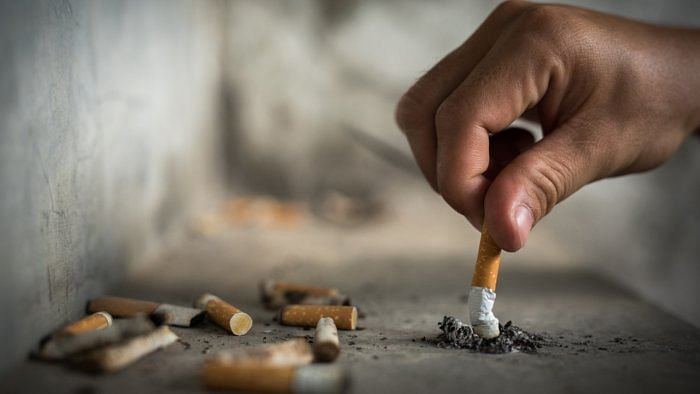
If there is one area where the application of heuristics will fetch immediate and lasting rewards, it is the vexing challenge posed by tobacco usage in all its forms. We have plenty of past data and experience to underline the evils of tobacco. It is now common knowledge that almost 30 to 35 per cent of cancers can be prevented by simply eradicating tobacco. A simple analysis tells us that tobacco control and regulation are at best band-aid measures that are not sustainable to fight a ghastly health hazard that claims more than 1.3 million lives every year in India.
I started a cancer care chain to treat cancer patients. However, as oncologists, our ultimate goal is to ensure the health and well-being of society at large. The best way to ensure the health of our society is to prevent cancer, i.e., not have the disease at all. To achieve this outcome, society as a whole needs to come together to get rid of the tobacco menace.
One way of doing this is to urge people to stop using tobacco. Towards this effect, we are already doing our best to put the cancer burden in perspective through a comparative analysis of prevention vs. treatment and running focused initiatives to highlight the importance of early cancer detection in deciding successful therapeutic interventions.
Creating public awareness of the health hazards of tobacco consumption is no doubt a critical need, but it has its limitations. Even today, many films and entertainment programmes tend to liken smoking to a sense of machoness and bravado. A statutory warning at the bottom of the screen does little to dissuade the vulnerable populations, especially the youth, from aping their screen heroes.
A price hike is not a deterrent either for these die-hard fans. That’s precisely why only a statutory ban on tobacco can help break the vicious cycle of fatal consequences.
A ban on tobacco will no doubt impact farmers adversely. The truth is that 95 per cent of India’s farmers grow crops other than tobacco. So, the challenge is to rehabilitate the rest through alternate farming to protect their economic interests as well as safeguard the health interests of the nation.
Toward this effect, our team is steering an alternative farming project in Hunsur, a tobacco belt in Karnataka. We have received a positive response from the farmers, with some of them even reporting a revenue growth after having switched over to sandalwood farming. While this transformation has had a positive effect on the health and well-being of the community, the real nation-wide thrust will come only from governmental measures. Schemes like barn buyouts should be proactively encouraged by the Health Ministry and industry bodies. The tobacco board needs to make tobacco control (and not tobacco promotion) its principle agenda.
Every year, about a million people die from tobacco-induced illnesses, including cancer. This means the industry needs to garner as many customers every year, which is why they target the vulnerable younger population. According to the Global Youth Tobacco Survey, one-fifth of Indian teenagers aged 13–15 use tobacco. About 38 per cent of cigarette smokers, 47 per cent of bidi smokers, and 52 per cent of smokeless tobacco users picked up the habit even before they turned 10.
The tobacco industry urgently needs to explore alternative ways of revenue generation by venturing into new businesses. Consequently, the overall burden on the government exchequer will also be reduced as fewer illenesses will result in lesser healthcare expenditure, which is a compelling economic benefit of a tobacco ban. Over time, anti-tobacco measures will have a positive impact on the election outcomes of political parties as well; a discussion on tobacco’s endgame should hence be made an integral part of every election manifesto.
Given the counterforces at work, our fight against the tobacco industry is far from easy. But we must continue to challenge the lobbies and vested interests with our single-minded focus on disease prevention. The endgame plan for tobacco has seen the proactive involvement of researchers and public health advocates in recent years. Several countries have set endgame goals. While billions of dollars are being spent to fight the outcomes of tobacco usage, we have a cost-effective antidote in the form of tobacco prevention and control. It is high time all of us look beyond the economic value of tobacco and embrace the solution that is glaring at us. It’s high time we join hands with WHO and other bodies and work diligently towards the tobacco endgame!
(The writer is the executive chairman of Healthcare Global Enterprises Limited.)